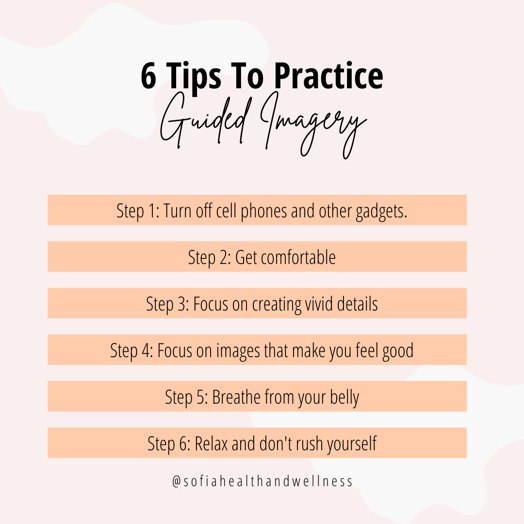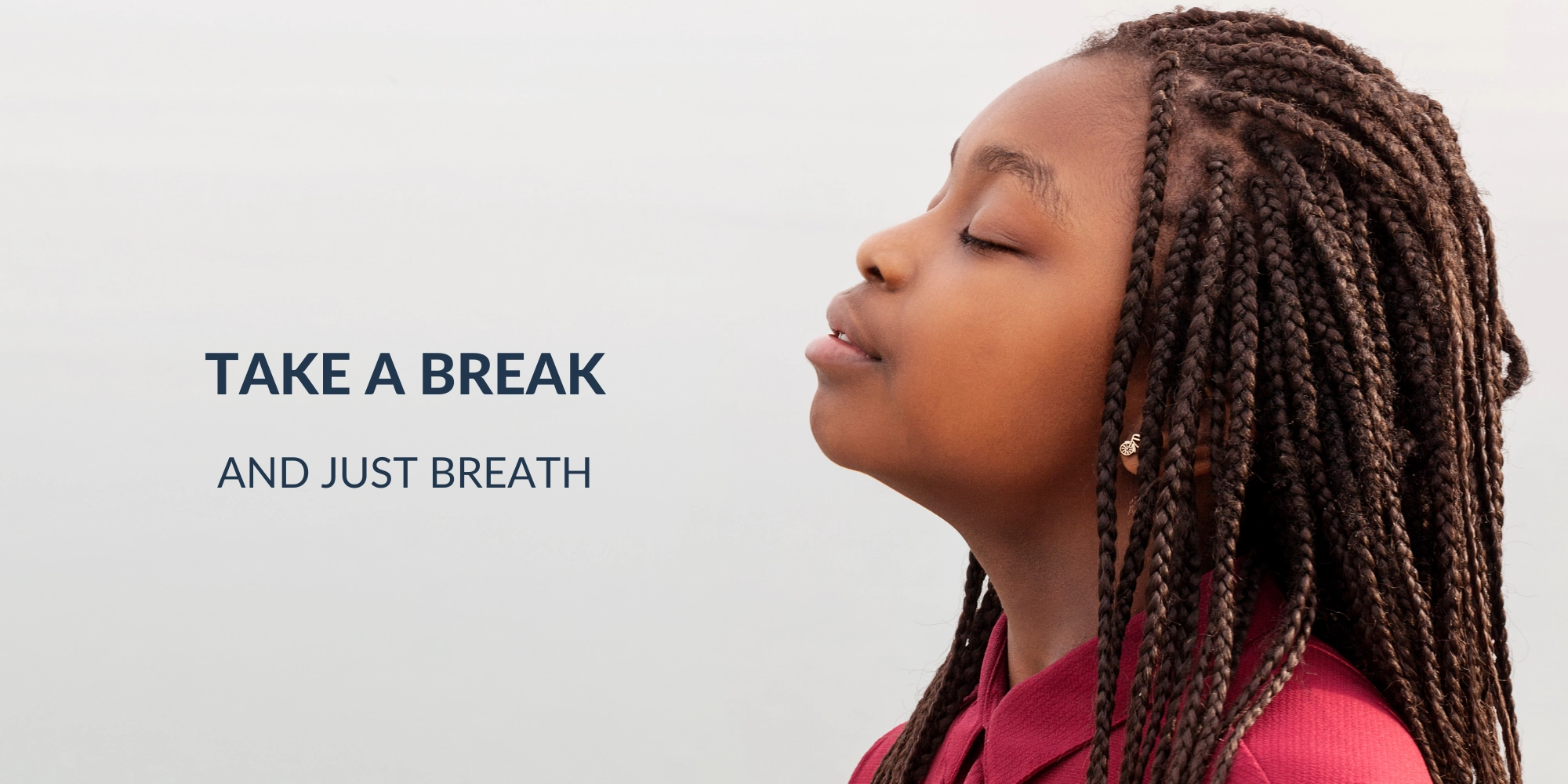Do you often find yourself struggling to fall asleep at night? Or do you find yourself feeling anxious and stressed out for no reason? If so, guided imagery may be the solution for you. This powerful technique can help improve your sleep, reduce your anxiety levels, and make you feel more at peace overall.
Table of Contents
The theory behind guided imagery is that by focusing on peaceful thoughts and mindfulness images, you can reduce stress and anxiety. It is simple to do, doesn't require any special equipment, and can be done anywhere.
While guided imagery is a great stress management tool, it's important to remember that it works best when used in conjunction with other stress relievers, such as exercise, relaxation techniques, and healthy lifestyle choices.
What Is Guided Imagery?
Guided imagery is a powerful relaxation technique that can be used to promote physical and mental well-being. The technique involves picturing peaceful scenes, happy memories, or calming environments in your mind. This method can help you shift your mind away from distractions and intrusive thoughts, allowing you to focus on the present moment and relax your body and mind.
You may imagine yourself lying on a beach, floating in a pool, or walking through a meadow. As you focus on your surroundings, pay attention to the details, such as the sound of the waves or the feel of the sun on your skin.
Guided imagery allows you to deeply relax your mind and body by focusing your attention on peaceful images and calming thoughts. It can be used anywhere at any time, making it an excellent tool for managing stress.
Benefits of Guided Imagery
There are many benefits to using guided imagery, both mental and physical, which have been well-documented in research studies. Take a look at some of the benefits of this powerful technique.
For an in-depth article on meditation or to learn about the different types of meditation and meditation benefits, check out our article "What is Meditation"
Reduce Stress and Anxiety
When you're feeling stressed or anxious, guided imagery for anxiety can be a great way to calm down and relax. Research shows that a 30-minute guided imagery meditation had similar positive effects to a 15-minute massage. While a massage may be more straightforward and quicker to receive, guided imagery can be done anywhere at any time. As such, it may be a more accessible option for people who are unable to visit a massage therapist regularly.
Guided imagery has also reduced anxiety in people with cancer undergoing chemotherapy treatment, as well as in students to lower test anxiety.
Improve Sleep
According to the Institute of Medicine (US) Committee on Sleep Medicine and Research, an estimated 50 to 70 million American adults have some form of sleep disorder. Of these, around 30% suffer from insomnia. While there are many potential causes of insomnia, anxiety, and stress are two of the most common.
When you're stressed or anxious, your body goes into "fight or flight" mode, which makes it harder to relax and fall asleep. Guided imagery can help reduce stress and promote better sleep. In a study published in the Journal Of Nursing Practice, findings show the positive effect of guided imagery in elderly people with insomnia.
Decrease Pain
While traditional medical treatments are often the first line of defense against pain, multiple studies have shown that adding guided imagery to a pain management plan can help achieve relief.
Guided imagery has been proven to be effective in managing pain and anxiety in people undergoing elective joint replacement surgery. For people with terminal cancer, this meditation technique has shown great promise in alleviating pain with fewer side effects.
Reduce Symptoms of PTSD
About 12 million adults in the United States experience post-traumatic stress disorder (PTSD) during a given year. Guided imagery has been found to be helpful in treating PTSD, as it can reduce intrusive memories, nightmares, and flashbacks. The aim is to redirect thoughts from negative or distressing experiences and feelings and focus on positive ones instead.
Guided imagery can also lessen the overall impact of PTSD symptoms, such as anxiety and depression. It is important to work with a qualified therapist to ensure the techniques are used safely and effectively.
For many people suffering from PTSD, guided imagery can be a valuable tool in managing symptoms and improving overall well-being.
Cope with Grief
Grief is a universal emotion that everyone experiences at some point. While the death of a loved one is the most common cause of grief, you can also feel grief in response to other major losses, such as the loss of a job or the end of a relationship. No matter the cause, grief can be an intensely painful and overwhelming emotion. Thankfully, there are coping strategies to help you through difficult times, including guided imagery.
Guided imagery meditation and self-guided meditation for healing can help you deal with grief in a healthy way by helping you process your emotions. This can be a powerful tool in healing your heart and moving on with your life.
The practice can be done alone or with a therapist, and it usually involves picturing yourself in a peaceful, safe place. As you focus on your breathing and the meditation images, you may find it easier to let go of anxious thoughts and relax your body. Over time, guided imagery can help you feel more peaceful and connected to your loved ones, even if they are no longer physically present.
How To Practice Guided Imagery
There are different resources you can use to practice guided imagery. You can find recordings of guided imagery sessions online or perhaps even at your local bookstore or library. You can also find meditation podcasts, which are great for when you need a little extra guidance.
Visit Sofia Prime to get access to hundreds of live classes - including guided imagery and meditation classes.
You can also receive guidance by attending one-on-one meditation classes offered both in person and online. If you want to try a private session, visit Sofia Health to get started and choose the format that best suits your needs.
There are plenty of free meditation apps you can download on your phone to practice guided imagery and self-guided meditation while on the go. Or get full access to hundreds of live guided imagery classes led by meditation and wellness experts at Sofia Prime.
You can even try creating your own meditation script or writing down a place that makes you feel calm and relaxed if you're feeling adventurous. If you enjoy being part of a community, you might consider looking for a meditation group to join, either in person or online.
Guided imagery is a great way to take a break from the chaos of everyday life and focus on the present moment. If you've ever been curious about this relaxation technique, here are a few tips to get started.
Tips and Techniques To Practice Guided Imagery
The following are the five main techniques of guided imagery:
Pleasant Imagery
This technique, which is also called feeling state imagery, involves visualizing peaceful, positive settings. It can be anything from a peaceful meadow or a beautiful garden in bloom. Picturing yourself in a relaxed setting can help reduce stress and improve your mood.
Physiological Imagery
Physiological imagery can help you understand and manage physical symptoms. The technique focuses on the entire body and is based on the idea that your thoughts and emotions can influence your physical state.
For instance, if you have chronic pain, you might explore memories and emotions associated with the pain. By doing so, you can begin to work through the trauma that may be causing the pain.
Mental Reframing
Mental or cognitive reframing is a process of changing the way you think about a situation in order to change your emotional response to it. For example, if you're feeling anxious about an upcoming presentation, you might try to reframe it as an opportunity to show off your knowledge and skills.
This technique can help manage difficult emotions, but it's important to remember that it's not always possible or desirable to change the way you feel about something. Sometimes, the best course of action is to simply allow yourself to feel whatever it is you're feeling.
Mental Rehearsal
Mental rehearsal is a form of visualization that is often used by athletes to improve performance. The idea is to rehearse the desired outcome in your mind, picturing yourself going through the motions and achieving the desired result. This technique can be an effective way to improve motor skills and coordination and can help increase self-confidence and reduce anxiety.
Receptive Imagery
Receptive imagery is a type of mental image that occurs without any conscious effort on your part. It's basically like your mind is passively receiving an image rather than actively creating it. You simply observe what imagery occurs naturally without trying to control it.
In many cases, the receptive imagery you experience can be helpful in achieving your goals. For example, if you're trying to remember a long-forgotten memory, the images that come to mind may hold some key clues. Or if you're trying to solve a difficult problem, the imagery you experience may provide some helpful insights.
Guided Pleasant Imagery Step-by-Step Guide
- Choose a comfortable spot to sit or lie down. Make sure you won't be interrupted for at least 10 minutes.
- Close your eyes and take a few deep breaths. Inhale through your nose and exhale through your mouth.
- Begin to imagine a peaceful place. It can be anywhere you want like a beach, a forest, the mountains, etc. Really picture it in your mind. What does it look like? What do you see around you?
- Listen to the sounds around you. What do you hear? Is there a breeze blowing? The sound of waves crashing? Birds chirping?
- Smell the smells around you. What does it smell like? Saltwater? Fresh air?
- Feel the textures around you. What does the ground feel like beneath your feet? Are there any other textures around you? Can you feel the warmth of the sun on your skin?
- Taste the tastes around you. Do you taste salt in the air? The sweetness of berries?
- As you continue to relax in this peaceful place, notice how your body feels. Are all of your muscles relaxed? Do you feel lighter and more at ease?
- Allow your mind to wander and explore the scene. If intrusive thoughts enter your mind, simply let them go and return your focus to the imagery.
- Stay in this peaceful place for as long as you'd like. When you're ready, slowly open your eyes and take a few deep breaths before getting up and resuming your day.
Tips for Beginners
The key to a successful guided imagery practice is to create a detailed mental image that is both positive and realistic. If you’re new to guided imagery, here are a few tips to get the most out of your experience:
- Turn off cell phones and other gadgets.
- Make sure you’re comfortable in your physical environment.
- Focus on sensory details to create a more vivid and engaging experience.
- Start slowly and focus on positive images that make you feel good.
- For best results, make sure to breathe from your belly.
- Relax and don’t rush through the process.
With regular practice, you will likely find that it becomes easier and more enjoyable to relax deeply and access the power of your imagination.
Find a Coach
You may want to find a qualified health coach who can help you to create a customized relaxation program. Look for someone who has undergone formal training and who is experienced in helping people achieve their desired results using guided imagery. You may also want to check if your coach is certified by a professional organization.
While it is possible to practice guided imagery on your own, working with a qualified coach can help you get the most out of this powerful tool. You can book a meditation coach to help you choose the right guided visualization for your needs and guide you through the process, providing support and encouragement along the way.
Conclusion
If you're looking for a way to improve sleep quality, reduce anxiety, or simply relax, then consider giving guided imagery a try. It's a safe and effective method to improve your overall health and well-being. Be sure to experiment and try out different techniques until you find one that works best for you. And don't forget to enjoy the process.
If you're interested in learning more about guided imagery and its many benefits, book a consultation with a meditation expert on Sofia Health today. Or register to Sofia Prime to start your free two-week trial, and get access to live classes led by world-class instructors as well as a video video-on-demand library.




.png)

.png)

